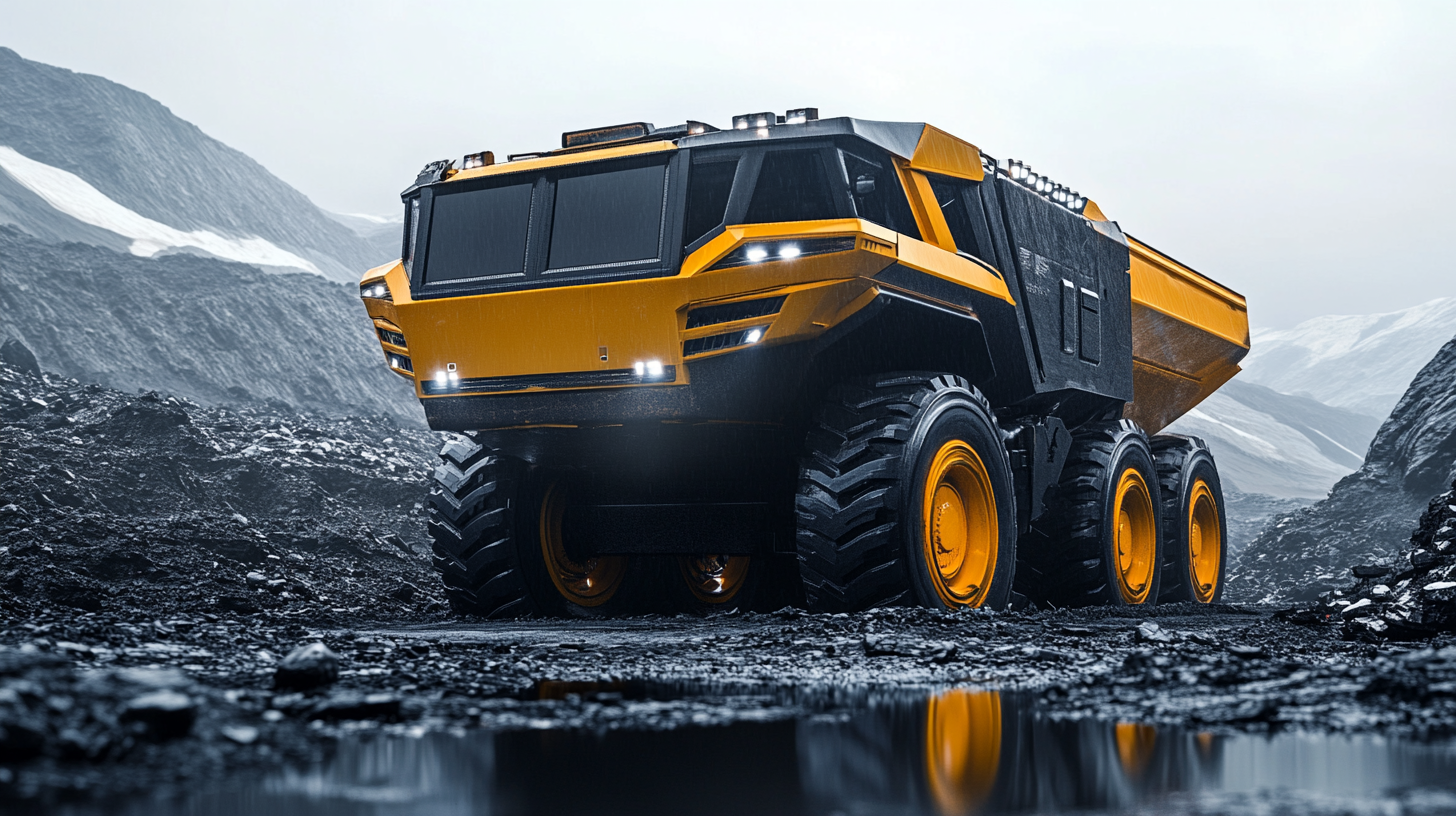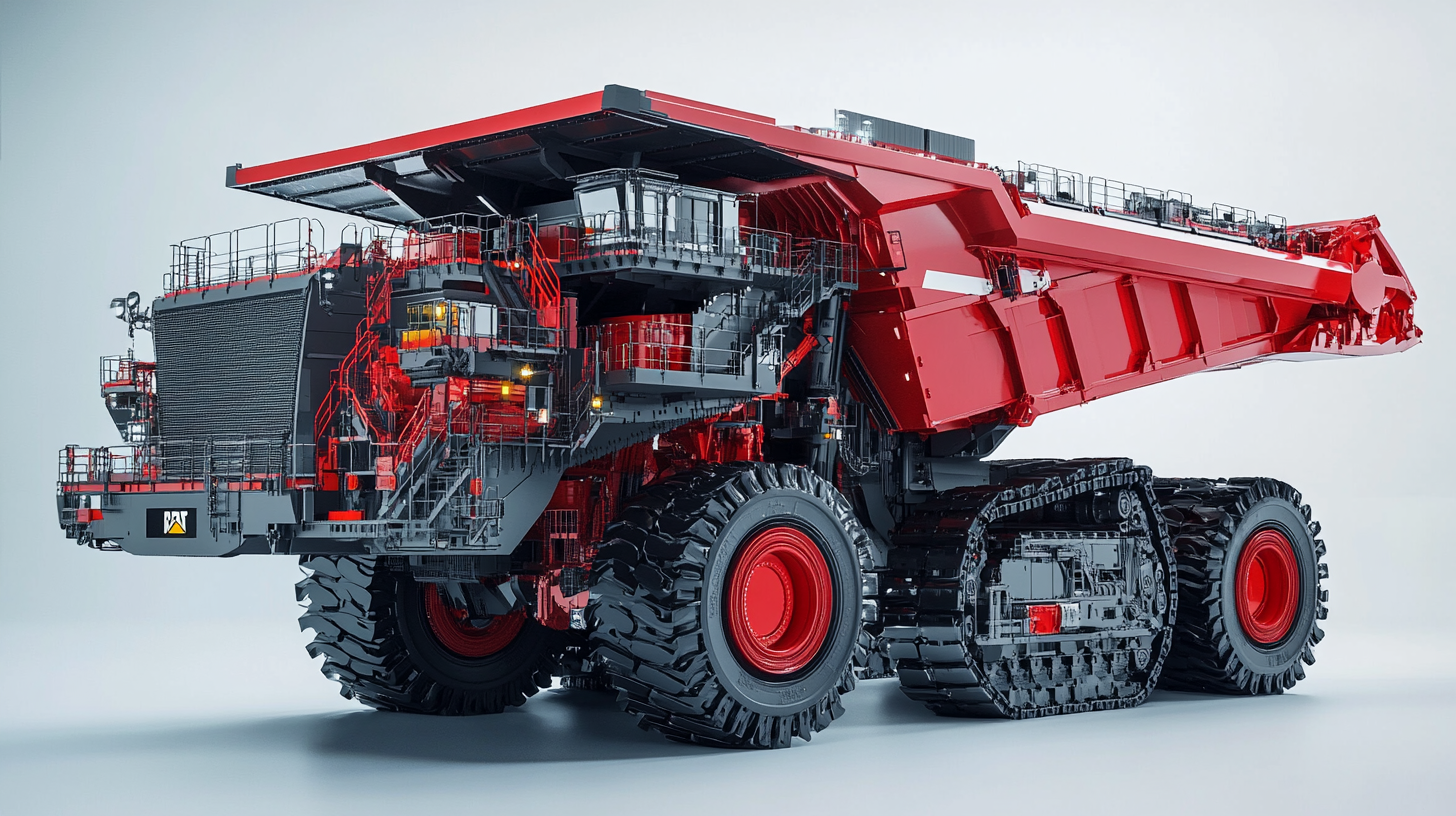The mining industry plays a crucial role in the global economy, contributing approximately $1 trillion to GDP annually. As the demand for minerals and metals continues to rise, the need for efficient operations becomes paramount, particularly in the area of hauling. "Hauling In Mining" represents a significant portion of operational costs, accounting for nearly 30% to 50% of the total mining expenses, depending on the mineral being extracted. Consequently, optimizing this process is not only essential for profitability but also for sustainability as businesses strive to reduce their carbon footprint.
Innovative approaches to hauling in mining are being explored as a response to these pressing challenges. The implementation of advanced technologies, such as autonomous vehicles, GPS tracking, and real-time data analytics, is revolutionizing traditional methods and enhancing productivity. According to a report by the International Council on Mining and Metals, effective management of hauling operations can improve efficiency by up to 15%. As the industry evolves, mining companies must prioritize these innovations to streamline their operations, reduce costs, and meet the increasing global demands for minerals in a responsible manner.

The mining industry has long relied on traditional hauling methods, but innovative technologies are reshaping operations to enhance efficiency and sustainability. According to a report by Research and Markets, the global mining haulage market is expected to grow significantly, projected to reach $18 billion by 2025. This growth is largely driven by advancements in technology, such as automation and telematics, which allow for real-time data collection and analysis. These innovations enable mining companies to optimize their hauling operations by improving load management, equipment maintenance, and route planning.
One of the most promising technologies is the implementation of autonomous trucks. A study by McKinsey & Company highlights that companies employing autonomous transport systems can increase operational efficiency by up to 30%. These self-driving vehicles minimize human error, reduce operational costs, and enhance workplace safety. Furthermore, the integration of Artificial Intelligence (AI) in logistics planning allows for more informed decision-making, helping companies efficiently allocate resources and reduce unnecessary downtime during hauling processes.
In addition to automation, the utilization of electric and hybrid hauling equipment is gaining traction as the industry focuses on sustainability. The International Council on Mining and Metals (ICMM) states that transitioning to electric vehicles can reduce greenhouse gas emissions in the mining sector by up to 20%. As the mining industry grapples with environmental concerns, investing in innovative hauling technologies not only improves operational efficiency but also aligns with global sustainability goals, making it a win-win for both miners and the planet.
Sustainable practices in mining hauling are becoming increasingly vital as the industry faces mounting pressure to reduce its carbon footprint. According to a report from the International Council on Mining and Metals (ICMM), the mining sector is responsible for approximately 4-7% of global greenhouse gas emissions. This stark statistic highlights the urgent need for innovative approaches that prioritize sustainability in hauling processes.
One effective strategy is the implementation of electric and hybrid haul trucks, which can significantly reduce fossil fuel consumption. A study by McKinsey & Company reveals that shifting to electric vehicles can decrease emissions by up to 90% in certain mining operations. Additionally, mining companies are now exploring autonomous hauling systems that optimize routes and reduce energy waste, leading to further emissions reductions. For instance, companies like Rio Tinto are already employing autonomous trucks in their operations, achieving a 15% increase in productivity while contributing to sustainability goals.
Another crucial aspect is the integration of renewable energy sources to power hauling equipment. The World Economic Forum notes that transitioning to renewable energy could cut mining emissions by 30% by 2030. By harnessing solar or wind power for operations, companies not only reduce dependency on traditional energy but also pave the way for a more sustainable future in mining.
Embracing such transformative practices not only aligns mining operations with global sustainability goals but also enhances competitiveness in a market that increasingly values environmental stewardship.

In today’s rapidly evolving logistics landscape, data-driven decision-making is emerging as a critical component for enhancing efficiency in hauling operations within the mining sector. As demonstrated by industry reports, companies that effectively leverage data analytics can experience up to a 25% reduction in operational costs while improving overall service delivery. This is particularly relevant in mining, where hauling logistics can be complex and resource-intensive.
The integration of artificial intelligence (AI) into logistics is pivotal in transforming traditional practices. Contrary to popular myths suggesting that AI may complicate decision-making processes, experts now affirm its role as an invaluable asset. For instance, a recent study published in 2024 indicates that AI applications in transport have shown a 30% improvement in route optimization, thereby minimizing delays and excess fuel consumption. Such advancements are crucial as they not only streamline operations but also enhance environmental sustainability—a growing concern for the mining industry.
As logistics firms increasingly pursue technology-driven acquisitions, the focus has shifted towards innovations that support real-time data analysis and predictive analytics. This strategy is aligned with the broader industry trends of 2024, wherein companies are harnessing cutting-edge technologies to improve efficiency and customer satisfaction. By embracing these innovations, mining operations can meet the demands of an increasingly competitive market while ensuring their logistics processes are both cost-effective and environmentally responsible.
The mining industry is undergoing a significant transformation, particularly in the area of haulage systems, where automation is playing a pivotal role. Traditional methods of transporting materials from mining sites often involve labor-intensive processes that can be inefficient and prone to error. However, with advancements in technology, automation is streamlining operations, enhancing safety, and optimizing productivity.
Automated haulage systems (AHS) utilize autonomous vehicles equipped with sophisticated navigation and sensing technologies to transport ore and waste more efficiently. These vehicles can operate around the clock, minimizing downtime and maximizing throughput. By alleviating human operators from the hazards associated with heavy machinery, automation also contributes to a safer work environment, reducing the number of accidents and injuries on site.
Moreover, integrating data analytics and AI into haulage operations allows for real-time monitoring and predictive maintenance, which can prolong the lifespan of machinery and reduce operational costs. Automated systems can adapt to various conditions without the need for constant human intervention, ensuring that haulage processes remain smooth regardless of environmental challenges. As mining companies continue to adopt these innovative technologies, the efficiency and reliability of haulage operations are set to improve, positioning them for sustainable growth in an increasingly competitive global market.
The economic impact of modern hauling techniques on global mining operations cannot be overstated. As the mining industry increasingly seeks efficiency, innovative hauling methods are redefining operational cost structures. Advanced technologies such as autonomous trucks, conveyor systems, and drone surveillance are streamlining the logistics of moving materials, significantly reducing the time and labor required for these processes. This efficiency not only lowers operating costs but also enhances productivity, which is crucial for maintaining competitiveness in the global market.
Moreover, modern hauling techniques contribute to a more sustainable approach in mining operations. Electric and hybrid vehicles are gaining traction as environmentally friendly alternatives to traditional diesel-powered trucks. By decreasing greenhouse gas emissions and fuel consumption, these technologies align mining with global sustainability goals. The shift towards sustainable operations is not just beneficial for the environment; it also resonates with investors and consumers who are increasingly demanding responsible mining practices.
Finally, the economic benefits extend beyond just individual companies. Modernized hauling systems facilitate faster transportation of materials, enhancing the supply chain efficiency. This improved logistics can lead to greater market responsiveness and agility, which is vital in a volatile global economy. As mining operations evolve, the implementation of innovative hauling solutions will ensure they remain economically viable while addressing the growing calls for sustainability in the industry.
